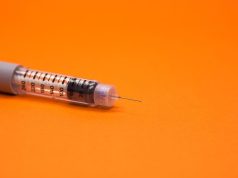Mean total costs per eight-week prescription and annually modestly lower for infliximab biosimilar
WEDNESDAY, Sept. 5, 2018 (HealthDay News) — Under Medicare Part D, out-of-pocket costs are similar for infliximab and its biosimilar infliximab-dyyb, according to a research letter published in the Sept. 4 issue of the Journal of the American Medical Association.
Jinoos Yazdany, M.D., M.P.H., from the University of California in San Francisco, and colleagues calculated the mean total cost and out-of-pocket cost requirements for infliximab-dyyb and infliximab assuming a standard eight-week dosing regimen. These national means were used to project maximum annual out-of-pocket costs if beneficiaries used each drug and no other prescriptions under a standard 2017 Part D benefit. As part of Part D, beneficiaries receive a discount during the coverage gap for brand-name drugs and biologics but not for biosimilars.
The researchers found that fewer plans covered infliximab-dyyb than infliximab (10 versus 96 percent of the 2,547 plans). The mean total cost per eight-week prescription and annually was modestly lower for infliximab-dyyb ($2,185 versus $2,667 and $14,202 versus $17,335, respectively). For infliximab-dyyb, plans universally required coinsurance cost-sharing; coinsurance rates were similar to infliximab (26.6 versus 28.4 percent of drug cost, respectively). Projected annual out-of-pocket costs were higher for infliximab-dyyb than for infliximab without gap discounts ($5,118 versus $3,432).
“Although biosimilar gap discounts begin in 2019, infliximab-dyyb may still not significantly reduce Part D beneficiaries’ out-of-pocket costs given its high price and coinsurance cost-sharing similar to infliximab,” the authors write.
One author disclosed financial ties to the pharmaceutical industry.
Copyright © 2018 HealthDay. All rights reserved.








